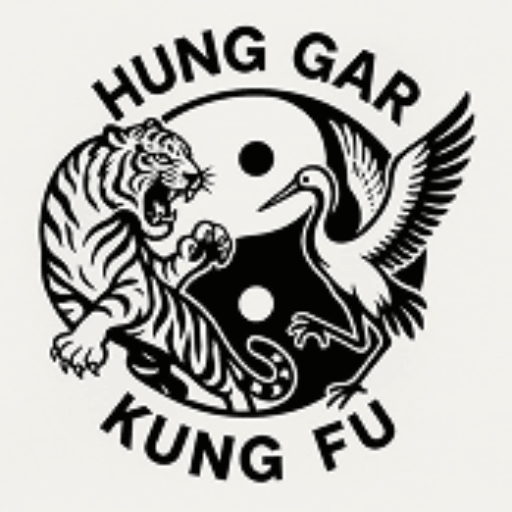Discover the rich history, philosophy, and practice of kung fu - one of the world's most respected martial arts traditions
Whether you've watched classic Bruce Lee films or seen stunning Shaolin demonstrations, kung fu has likely captured your imagination. But what exactly is kung fu, and what makes this ancient Chinese martial art so compelling to millions of practitioners worldwide?
If you're considering starting your martial arts journey or simply curious about this fascinating discipline, this comprehensive guide will walk you through everything you need to know about kung fu, from its ancient origins to its modern practice.
Contrary to popular belief, kung fu (功夫) doesn't literally translate to "fighting" or "martial art." The term actually means "skill achieved through hard work and practice over time." In Chinese culture, you could have kung fu in cooking, calligraphy, music, or any discipline requiring dedication and mastery.
However, when people refer to kung fu today, they're typically speaking about Chinese martial arts - a diverse collection of fighting systems, philosophies, and physical practices that have evolved over thousands of years.
Think of kung fu like a vast library - it's not one single book, but rather hundreds of different fighting styles, each with its own techniques, principles, and cultural heritage. Some focus on explosive power, others on flowing movements, and many incorporate weapons training alongside empty-hand techniques.
Most kung fu traditions trace their philosophical roots back over 1,500 years to the Shaolin Temple in Henan Province, China. According to legend, an Indian monk named Bodhidharma arrived at the temple and found the monks in poor physical condition from long hours of meditation.
To strengthen their bodies and minds, Bodhidharma developed a series of exercises based on animal movements he observed. These became the foundation for what we now know as Shaolin kung fu - emphasising the connection between physical strength, mental discipline, and spiritual development.
While the Bodhidharma story is largely legendary, historical evidence shows that Chinese martial arts developed organically across different regions and time periods:
Understanding kung fu requires grasping several fundamental concepts that distinguish it from other martial arts:
Kung fu emphasises both external physical skills (strength, speed, technique) and internal cultivation (breathing, mental focus, energy flow). This holistic approach means practitioners develop not just fighting ability, but overall wellness and personal character.
Many kung fu styles mirror movements found in nature - the flowing water of rivers, the rooted strength of trees, or the precise strikes of various animals. This biomimicry teaches practitioners to work with natural principles rather than against them.
Unlike purely combative systems, traditional kung fu incorporates ethical teachings and philosophical principles. Students learn about respect, humility, perseverance, and using their skills responsibly.
The diversity of kung fu styles can seem overwhelming to beginners, but they generally fall into several main categories:
Northern Chinese styles typically feature:
Southern Chinese styles typically emphasise:
External styles focus on:
Internal styles emphasise:
Some of the most recognisable kung fu styles mimic animal movements:
Regular kung fu practice delivers comprehensive fitness improvements:
The mental aspects of kung fu training are equally important:
Authentic kung fu instruction includes cultural elements:
While kung fu includes combat applications, most modern practitioners train for fitness, personal development, and cultural appreciation. Many schools emphasise the art's philosophical and health benefits over fighting skills.
Kung fu training gradually develops the physical attributes needed for practice. Students of all ages and fitness levels can participate and benefit from consistent training.
While mastery requires years of dedication, beginners can learn practical techniques and experience significant benefits within months of starting training.
The diversity within Chinese martial arts is enormous. Different schools and styles can have dramatically different approaches, techniques, and training methods.
Understanding kung fu's unique characteristics helps clarify what sets it apart:
When choosing where to learn kung fu, consider these factors:
Instructor qualifications: Look for teachers with legitimate lineage and teaching experience Class structure: Observe whether instruction includes technique, forms, applications, and cultural elements School atmosphere: The environment should be respectful, supportive, and focused on learning Style alignment: Different styles suit different personalities and goals
Beginning kung fu classes typically include:
Most kung fu schools require minimal equipment to start:
Kung fu embodies the Taoist concept of yin and yang - complementary opposites that create harmony. Techniques alternate between:
Advanced kung fu practice aims for wu wei - acting in accordance with natural flow rather than forcing outcomes. This principle teaches practitioners to:
Traditional kung fu training emphasises moral cultivation alongside physical skills:
Many people today practice kung fu primarily for health benefits:
Kung fu schools serve as important cultural institutions, preserving:
Contemporary kung fu instruction often adapts traditional methods for modern students:
Kung fu suits people with diverse goals and backgrounds:
If kung fu appeals to you, the best way to learn more is through direct experience. Most schools welcome visitors to observe classes, and many offer trial lessons for newcomers.
Remember that beginning any martial art requires patience with yourself. Like learning a musical instrument or foreign language, kung fu skills develop gradually through consistent practice. The journey itself - not just the destination - provides most of the benefits that make this ancient art so rewarding.
At our Reading kung fu school, we preserve traditional teaching methods while making them accessible to modern students. Our experienced instructors guide beginners through the fundamentals while providing advanced practitioners with deeper knowledge and skills.
Whether you're interested in fitness, self-defence, cultural education, or personal development, kung fu offers a path that can enrich your life for years to come. The ancient masters understood that true strength comes not just from physical power, but from the integration of body, mind, and spirit.
Contact us today to schedule a trial class and discover how kung fu can become part of your journey toward greater health, confidence, and personal growth.
Interested in exploring specific kung fu styles or learning more about training methods? Contact Us.
